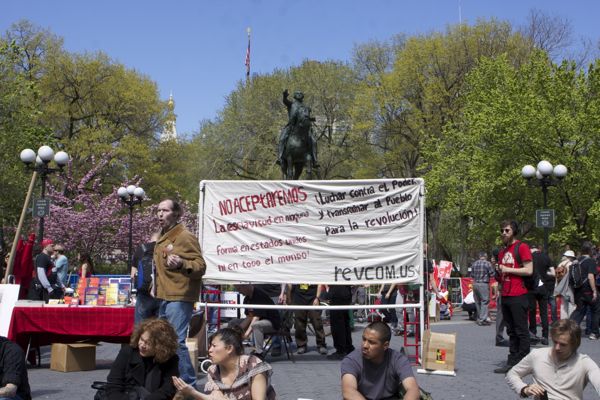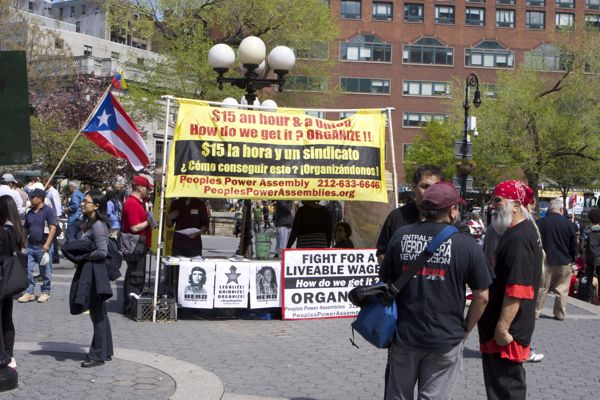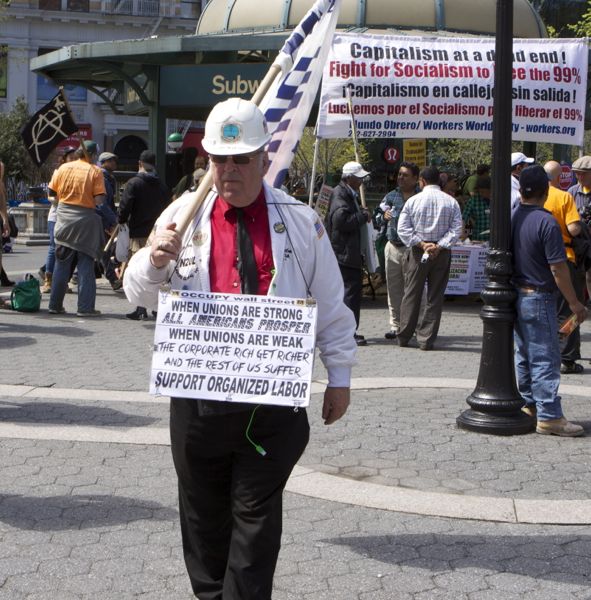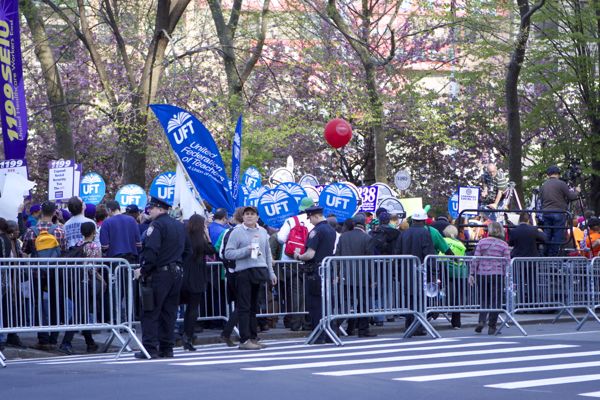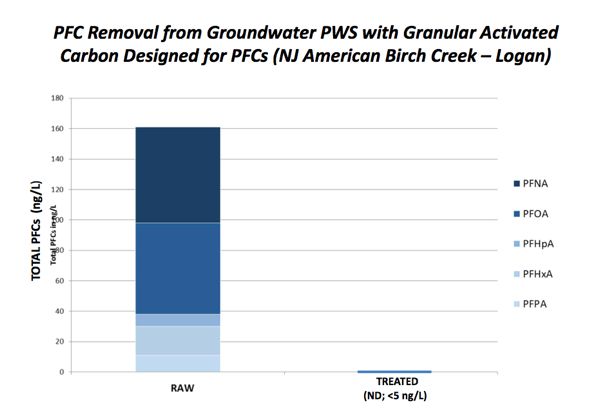Dupont Pompton Lakes Toxic Nightmare Just One of 81 Sites In NJ
Risks From “RCRA Corrective Action” Toxic Sites Worse Than Superfund
Fortune 100 Corporations Pollute With Little Accountability
To paraphrase Bill Greider’s prescient 1993 book: Who will warn the public?
Last week, I was angered but not surprised by EPA’s craven concession to Dupont’s challenge of a “RCRA Corrective Action” permit that would have required dredging of highly mercury contaminated sediments from Pompton Lake and sampling and removal of downriver “hot spots” (and likely a huge compensation payment to the public for Natural Resource Damages associated with poisoned fish & wildlife).
But Pompton Lakes is just one of NJ’s 81 communities with a highly contaminated RCRA hazardous waste site and a Corrective Action toxic waste cleanup underway. The impunity of corporate polluters, cleanup delays, lax government oversight, and public health risks – bordering on negligence, fraud and coverup – we’ve seen in Pompton Lakes are not unique.
Scores of NJ communities and thousands of NJ residents currently are being exposed to uncontrolled releases of hazardous wastes from 81 highly polluted industrial sites, yet the people at risk who live in those communities know virtually nothing about it.
Let’s put a finer point on and repeat that: human exposure to hazardous wastes is not controlled at at least 10 of 81 high risk toxic sites in NJ, and groundwater pollution is not under control at at least 21 more, and EPA is fully aware of those risks.
Here is NJ’s list of 81 RCRA Corrective Action sites.
These are not abandoned sites or created by bankrupt little “mom & pop” polluters – most are currently commercially operated by highly profitable corporations.
Note the major blue chip corporations involved, including Alcatel-Lucent; American Home Products; American Standard; Brystol-Myers Squibb; Chevron; Chemical Waste Management; Dupont (4 sites); El Paso Energy; Ethicon; Exxon; Fisher Scientific; FMC; Givaudan; Hess; Honeywell; IBM; IFF; Merck; Novartis; Ortho-Clinical; PolyOne; Revlon; Schering; Simmonds Precision; Southland; Sunoco; & Wyeth.
Hit the corporate names on this list to get site specific information.
You might want to compare the RCRA sites to NJ’s 113 Superfund sites.
Are you aware of those risks?
When was the last time you read news reports of your local Congressman touring a “RCRA Corrective Action” site in your community? I can assure you, it never happened. Why?
When was the last public hearing you attended to review and comment on a proposed RCRA cleanup in your community?
When was the last time you read a news report about a “RCRA Corrective Action” site? Rarely if ever. Why is that?
That invisibility of the problems and lack of public participation is no accident – it is by design.
RCRA Corrective Action sites are firmly under the control of major big name US corporate polluters.
Over the last 3 decades, those polluters have lobbied Congress and EPA regulators and have virtually written the rules and worked the refs at EPA to keep their dirty laundry out of the newspapers – all while they continue to spew their toxic pollution into your basements, the air you breath, and the water you drink.
Just ask the folks who live in over 450 homes in Pompton Lakes NJ – who, despite almost a decade of knowledge by state and federal regulators, didn’t find out until 2008 that carcinogenic chemical vapors from the Dupont site were migrating into their homes.
As I’ve written, despite this knowledge of the risks of vapor intrusion, US EPA Region 2 falsely certified in Reports to Congress that “human exposure” in Pompton Lakes was “under control”.
For over 20 years, EPA and NJ DEP conspired with Dupont to avoid public participation and public hearings on the cleanup by conducting oversight of the Dupont cleanup under a negotiated 1988 State DEP Administrative Consent Order and “minor modifications” to an EPA issued 1992 RCRA permit. “Minor modifications” are supposed to be just what the name describes: minor – and they do not trigger public notice and hearing requirements under EPA RCRA regulations.
This is no conspiracy theory – Here is an email from the head of EPA Region 2 RCRA programs that proves my charge of intentionally avoiding public involvement:
>>> <Tornick.Barry@epamail.epa.gov> 05/14/2008 12:02 PM >>>
Maybe we should consider this a Interim Remedial Measures Workplan instead of a Remedial Action Workplan since we want to expedite it and to take a less formal public participation approach than for a remedial action?
So sickened by all this, to promote some transparent and accountability for a classic example of corporate “capture” of – and media blackout on – an important government program that is supposed to be protecting your health and environment, today we provide background and some basic information on the EPA’s “RCRA Corrective Action” program.
That RCRA program operates almost completely in the dark, with little community awareness and virtually no media coverage.
Ideally, some intrepid journalist out there might hit the links and do a little digging to warn the people in these 81 NJ towns of toxic time bombs in their towns.
- Background Information and Universe of RCRA Corrective Action Sites
According to a 2011 Report by the Congressional General Accounting Office (GAO)
The Hazardous and Solid Waste Amendments of 1984 revised RCRA to include new provisions requiring certain facilities to take corrective action to clean up their sites. EPA data show that as of the end of fiscal year 2010, about 6,000 facilities were subject to corrective action; that is, they were required to undertake corrective action in response to a release of hazardous waste or constituents.
The number of RCRA CA facilities dwarfs the well known Superfund program. The hazardous chemicals are virtually the same and just as toxic as those regulated under the Superfund program.
In fact, in many cases, RCRA sites are far more risky than their Superfund counterparts. For example, a hazard ranking score (HRS) of 28.5 or greater qualifies a site for Superfund – the Dupont Pompton Lakes site scored an astonishing 78 on the HRS, and that score did not include the vapor intrusion risks.
EPA stopped conducting HRS scoring at RCRA sites to cover up this huge problem: what would happen if the public and press found out about these 6,000 industrial sites? They might demand that EPA and the corporate polluters spend billions of dollars and clean them up!
Again, here is NJ’s list of 81 RCRA Corrective Action sites.
- Who Is Responsible For Cleanup and How are RCRA Corrective Action Site Cleaned up?
Over 30 years ago, in 1984, Congress created the RCRA Corrective Action program and mandated cleanup.
EPA is the lead agency responsible for enforcing the 1984 law known as “HSWA”. EPA can delegate implementation of the program to States if State programs are as strict as the federal law. Over the last 30 years, 42 States have been delegated the RCRA Correction Action program.
But not NJ – 30 years later, and NJ still has not enacted equivalent State laws and adopted regulations required to receive EPA delegation of the RCRA Corrective Action program. Why is that?
NJ was very aggressive for 30 years in seeking Superfund site designations, and leads the Country in number of sites on the Superfund “National Priorities List” (NPL).
What explains such laggard behavior under RCRA compared to the aggressive implementation of Superfund?
Here’s how GAO describes the RCRA cleanup process:
There are no comprehensive cleanup regulations under RCRA. Instead, EPA and authorized states primarily use guidance to implement corrective action and impose requirements at individual facilities through their permits or orders. The agency emphasizes the flexible nature of the program…
So, how has this “flexible”, non-regulatory, guidance based program performed?
GAO reports the following:
Although RCRA, as amended, set no deadlines for completing cleanups under the corrective action program, EPA set [aspirational] performance goals for the program in response to planning requirements established for all federal agencies under the Government Performance and Results Act (GPRA) of 1993.
With no legislative mandates set by Congress, aspirational EPA goals, and voluntary Guidance – not regulations – to guide cleanups, and major corporations in control, one would expect performance to be weak.
Here’s what GAO found:
Over the years, nationwide progress on the cleanup of hazardous waste has been slow. Moreover, in October 1997 and August 2000, we reported that a number of management factors limited cleanup progress under the corrective action program during the 1990s, including a burdensome cleanup process and resource shortfalls. […]
In 1997, in response to GPRA, EPA established its first set of performance goals for the corrective action program. The goals were to be achieved by the end of fiscal year 2005 and targeted 1,714 facilities at high risk of causing potentially unacceptable public exposure to pollutants, having high levels of groundwater contamination, or both. The performance goals to be met by fiscal 2005 were as follows:
- controlling human exposures to contaminants at 95 percent of these high-priority facilities and
- controlling the migration of contaminated groundwater at 70 percent of the 1,714 facilities.12
Importantly, these goals did not explicitly address final cleanup of sites but rather sought to control contamination at high-risk sites first. Previously, we and others reported that EPA had not established long- term goals for final cleanup.13 In our August 2000 report, we noted that focusing only on controlling contamination and not on implementing final cleanup actions could postpone cleanups well into the future, and we recommended that EPA establish long-term and annual goals delineating the number or portion of facilities that are to implement final cleanup actions. In response to our recommendation, EPA agreed that implementing final remedies was important but decided at the time to use its limited resources to focus on controlling contamination at the worst sites. EPA also stated that the corrective action program did not have the resources to focus concurrently on containing contamination and implementing final cleanup actions.
EPA’s next set of performance goals, for 2008, began to address longer- term concerns. EPA continued the goals to control human exposures to contaminants and contain the spread of groundwater contamination, but it added two new goals. These two longer-term goals directed that a portion of high-priority facilities were to decide upon and construct a final cleanup remedy. EPA defined the completion of final remedy construction as the time when the physical components of a final corrective action remedy for a facility were in place and functioning correctly. EPA also increased the total number of high-priority facilities that must address the goals from 1,714 to 1,968.14 The performance goals to be met by fiscal year 2008 were as follows:
- controlling human exposures to contaminants at 95 percent of 1,968 high-priority facilities,
- controlling the migration of contaminated groundwater at 80 percent of these high-priority facilities,
- selecting final remedies at 30 percent of these facilities, and
- completing final remedy construction at 20 percent of these facilities.
The reader is directed to an EPA letter to GAO in the Attachments to th GAO report – there EPA characterizes these goals as “aspirational”.
So it is no wonder that those “aspirational” goals – not backed by law – are not being met.
Back to the findings of the GAO Report:
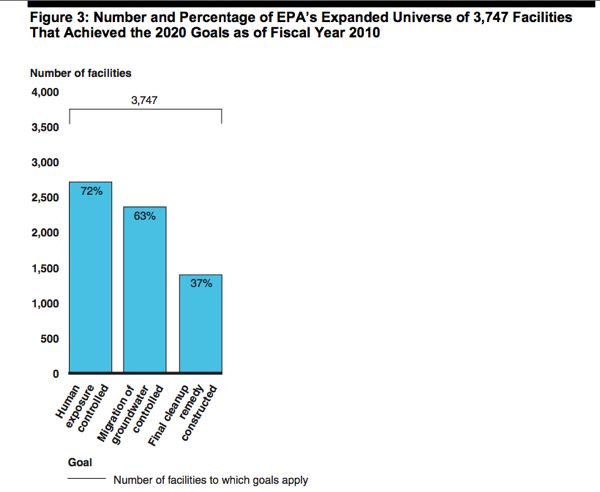
Figure 4 shows progress made by the 3,747 facilities covered by the 2020 goals in carrying out major milestones in the corrective action process— including facility investigation, remedy selection, and remedy construction—plus cleanup not yet started and cleanup completed. As the figure shows, by the end of fiscal year 2010, 283 (8 percent) of the 3,747 facilities had not yet begun the cleanup process. Some of these facilities may have been assessed by EPA or the state and assigned a high, medium, or low priority, but no further action had been taken. The facilities in this category are also the ones most recently added to the universe for the 2020 goals.
But what about EPA regulatory requirements that RCRA Corrective Action facilities provide up front “financial assurance” to pay for 100% of the cleanup costs?
What about enforcement of RCRA cleanup obligations, given these delays in cleanups?
What about ecological damages to fish and wildlife? Are the corporate polluters compensation the public for those Natural Resource Damages?
The RCRA Corrective Action program is an ongoing scandal of significant impacts to public health and the environment.
When will there be proper governmental and media oversight?


